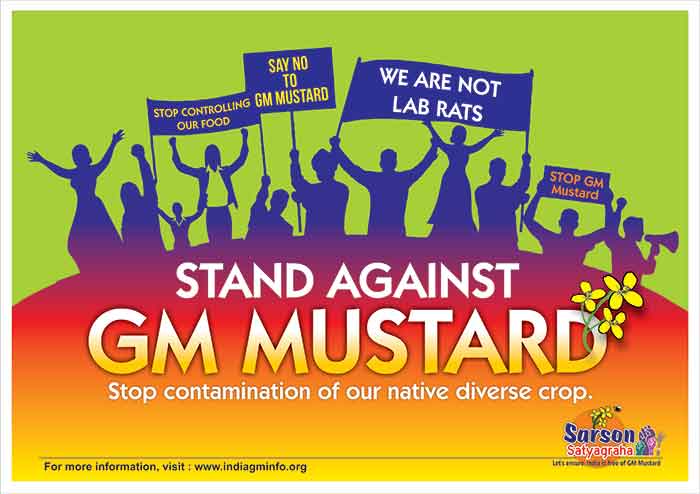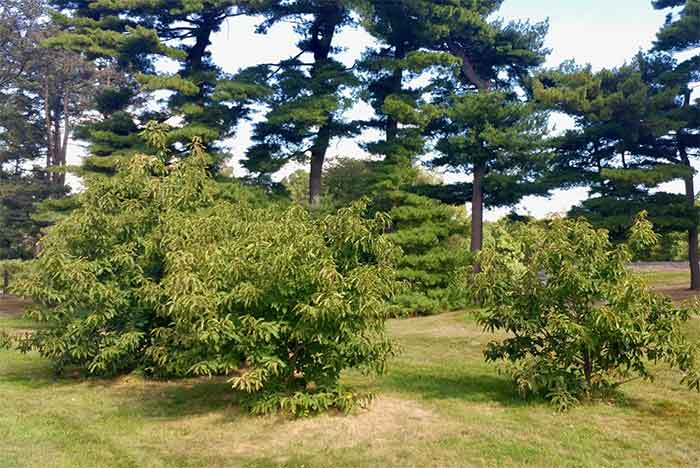by Sachin P S & Nidhi Hanji[1]

The term ‘piracy’ is often invoked when creative works are copied and distributed without permission of the rightful and original owner of the work. Global and Indian laws prevent such piracy. Similarly, the illegal accessing, appropriation and commodification of sovereign biodiversity and associated traditional knowledge, as also genetic modification of bioresources in such illegal ways, is held by the 1992 United Nations Convention on Biological Diversity (CBD)[2] as an act of biopiracy. The CBD required every signatory nation to pass effective laws to protect the country’s biodiversity, and the conforming legislation of India, the Biological Diversity Act, 2002[3] (BDA), considers biopiracy as a serious criminal offence. This weightage to tackle biopiracy was accorded by the Indian Parliament because biopiracy results in comprehensive and potentially permanent loss of ownership of genetic wealth of the people who have conserved it over thousands of years. This could result in massive loss of revenue, the natural and traditional right to use such bioresources, and potentially in the extinction of the species as the care essential to conserve it is missing when it is exploited without regard for sustainable use.
India is a megadiverse region. This rich biodiversity has been nurtured by agropastoral, tribal and indigenous communities over millennia, and their knowledge has been passed on as traditional knowledge – without any proprietary claim. In the post industrial economy, such knowledge has become fertile ground for corporations and public institutions to source new bioresources, and their associated traditional knowledge, to extract medicinal and nutritional value, and to also produce transgenics (Genetically Modified Organisms – GMO). These are then turned into proprietary commodities to be commercialised and profited from, particularly by private corporations, usually transnational corporations. When such bioresources and associated traditional knowledge are accessed for profiteering, and without informing and seeking permission of the local communities who have nurtured and protected them, and whose sovereign resources they constitute, the criminal offence of biopiracy results.
Detecting biopiracy requires constant vigilance. Tribal, indigenous, agro pastoral, fisher, traditional healers and other such natural resources dependent communities simply cannot fathom living entities can be commodified, commercialised, financialised, and genetically modified. They don’t even notice when corporations take control of their bioresources and community knowledge, and turn them into commodities as private property and for private profit. In recent decades, there are several cases of transnational corporations located in biodiversity poor industrialised countries taking advantage of the innocence and goodness of local communities, and employing their economic, technological and political prowess (essentially prevailing asymmetries of power) exploiting bioresources held in the South for the economic benefit of the North. Roots of such exploitation can be traced back to colonialism when imperial powers bio looted resource rich colonies in Africa, Asia, Australia and South America. The thought of seeking consent from local communities and the intent of sharing profits with fairness simply did not exist.
Quarter way into the 21st century, one would hope biopiracy and biolooting would be a thing of the past. Instead, it is widely prevalent, and is rarely, if ever, tackled. A major reason for this is weak laws in various biodiversity rich countries, or the lack of effective implementation of biodiversity protection laws even when they exist, as is the case in India.
Regulatory collapse in tackling biopiracy in India:
In 2005, M/s Monsanto, (now owned by Bayer, the largest seed company in the world), M/s Maharashtra Hybrid Seed Company (M/s Mahyco – Monsanto’s subsidiary) and M/s Sathguru Management Consultants Pvt. Ltd. (representing Agricultural Biotechnology Sustainable Project, sponsored by USAID), entered into agreements with the University of Agricultural Science (Dharwar), Tamil Nadu Agricultural University (Coimbatore) and Indian Institute of Vegetable Research (Varanasi) to access 16 local farmer-bred varieties of brinjal (eggplant) that are endemic to India. These brinjal varieties were then inserted with B.t. gene strand that was a proprietary property of Monsanto, to develop and commercialise B.t. Brinjal (India’s first GMO food). It was claimed that this genetically modified brinjal was effective in dealing with the stem borer pest. What was not known widely is that by such genetic modification, these varieties would now become the property of the developers – not the communities who have raised and nurtured them from yore.
The Genetic Engineering Appraisal Committee (GEAC)[4], a GMO regulatory body of the Ministry of Environment Forest and Climate Change (MoEFCC), oversaw the field trials and approved B.t. Brinjal for commercial release in October 2009. This decision was met with nation-wide uproar, particularly from the farming, environmental action, health and consumer action groups, on grounds that the decision was flawed and did not address various environmental, public health and socio-economic concerns. Responding to this situation, Mr. Jairam Ramesh, then Environment Minister of India, conducted unprecedented nationwide public hearings. On the basis of such transparent consultations, a range of scientific evidence, and guided by the Precautionary Principle, he issued a moratorium on the release of the B.t. Brinjal and other GMO food products on 9th February, 2010.[5]
When all these events unfolded under public scrutiny, a key aspect overlooked was the question of the legality of accessing 16 varieties of brinjal, including the GI tagged Udupi Brinjal or Gulla variety, by Monsanto et al. Sections 3 and 4 of the BDA unambiguously require foreign companies and foreign individuals to secure prior approval of the National Biodiversity Authority (NBA – an autonomous regulator that is administratively controlled by the MoEFCC), be it for research or commercial exploitation. This key safeguard is to ensure India’s sovereign biowealth is not illegally accessed to the detriment of its food and socio-ecological security. The law also ensures that the accessed product is not turned into a proprietary product locally or overseas, and commodified and commercialised illegally – all of which constitutes biopiracy.
Contracts between Monsanto et al. and the agricultural universities are evidence of the fact that in accessing the 16 local varieties of brinjal, the partners – transnational corporations and public universities – had collaborated in the theft of India’s genetic wealth. This was in abject violation of the CBD, in particular the Access and Benefit Sharing Protocol[6], and the BDA. These treaties and laws were evolved over decades to ensure communities with the sovereign rights over bioresources benefit from their commercial exploitation. Yet, no such compliance was on record. The GEAC and NBA quite simply ignored these grave violations, indicating a colossal failure in India’s regulatory systems protecting biodiversity and associated rights.
Why brinjal?
This calls to attention why brinjal, a vegetable that is widely cultivated and consumed, and whose production has never been of any major concern, was chosen? The answer perhaps lies in the massive commercial value of brinjal.
In the year 2015-16 alone, India cultivated 664 thousand hectares to produce 12,552 thousand metric tonnes (i.e. twelve billion five hundred fifty-two million kg) of brinjal[7] valued at Rs. 1669303 lakhs[8] (USD 2.3 billion). India accounts for almost 27% of global production, making it the second largest producer after China[9]. Clearly, this may have been a critical reason why brinjal was chosen as a candidate for making it India’s first GMO. Brinjal is valued for its various medicinal properties and is amongst the most consumed vegetables; and it is accessible to all – poor, middle class and the rich. The massive revenues and profits generated from making these 16 varieties (which constitute the majority of the brinjal varieties consumed) proprietary, can well be imagined.
When a country is lax in regulating access to bioresources and associated traditional knowledge, it could lead to loss in the billions of dollars of revenue. Besides, it could result in forfeiting the right to use the bioresources. Farmers who bred and protected these varieties, as also the local communities who sheltered them by their wise use of these varieties, would be completely cheated of their rightful share of this revenue.
Exposing biopiracy and Ensuring Regulatory Action Follows
Appreciating all these dimensions, Environment Support Group[10] (ESG) conducted a thorough investigation into how Monsanto et al. accessed these 16 local brinjal varieties. Multiple RTI applications were followed by several meetings with Karnataka Biodiversity Board (KBB) and NBA officials which established the gross illegality of the process by which B.t. Brinjal was produced. As the regulatory agencies dithered to act, ESG filed a formal complaint with the NBA and the KBB.
The NBA was reluctant to inquire into the matter, but the KBB responded to ESG’s persistence and conducted its own independent investigations which confirmed the facts reported in the complaint. The action to follow was for the NBA to now file a criminal complaint before an appropriate court, but the agency failed to move with the urgency needed.
Troubled by such persisting laxity of a key regulator in holding transnational corporations like Monsanto to account, ESG approached various Parliamentarians. This resulted in several questions being raised in the Parliament to which Ms. Jayanti Natarajan, who followed Mr. Ramesh as Environment Minister, tabled the following response on 6th September 2011:
“National Biodiversity Authority has received a complaint from M/s Environment Support Group, an NGO, on the alleged violation by M/s Mahyco / M/s Monsanto and their collaborators for accessing and using the local varieties for development of Bt Brinjal. NBA has decided to proceed as per law against the alleged violators on the basis of reports of the State Biodiversity Boards for accessing and using the local brinjal varieties without prior approval of the competent authority.” [11]
This was followed by a scathing expose of such regulatory failures in the 37th Report of the Parliamentary Committee on Agriculture (2011-12)[12], which, in one of the concluding remarks, stated “8.115: The Committee also has had the benefit of well considered views of several other stakeholders from outside the Government. These views based on science, field experience, first hand observation, evaluation and assessment totally go against the views of the Government and build a strong case against transgenics in agriculture crops more particularly in food crops.”
Despite all these assurances from the highest body of democracy, weeks and months passed. Yet, there was no action from the NBA. In a strange and unprecedented twist, the regulator decided to vote in its Board whether to prosecute Monsanto et al. for biopiracy or not – in effect questioning the privilege and wisdom of the Minister and the Parliament.
This situation compelled ESG to file a PIL[13] in the Karnataka High Court (WP 41532/2012) seeking, among other things, directions to the NBA to prosecute Monsanto et al. The sharp scrutiny of the Court pushed the NBA to act. Through its then Member Secretary Mr. Achalendra Reddy (who has recently been appointed as Chairman of the Authority), and two officials of the KBB, a criminal complaint was filed in the magistrate court at Dharwad (the district where most number of varieties were accessed: 6 of Karnataka’s brinjal varieties).
Unfettered trade in bioresources affecting biodiversity:
While the PIL pointed out biopiracy in the Bt. Brinjal case, it also highlighted how the BDA facilitated such biopiracy. The case focuses on Section 40 of the BDA relating to Normally Traded Commodities (NTCs) – i.e. agro resources that are part of international trade, and makes the case that it is so worded that the protection of the BDA is lost to any of the bioresources notified under this Section. Besides, it also highlights that the MoEF&CC has been given the power to notify NTCs without any conditions, and that such an unfettered power had already been employed by the MoEF&CC in its 26th October 2009 notification to notify 190 plants as NTCs: and this includes brinjal (Solanum melongena as the brinjal species is scientifically named) and at least 15 plants which are listed as threatened and critically endangered.
This serious concern had been raised in the last public consultation that Mr. Ramesh held on Bt. Brinjal. But it was dismissed by him – recorded in the 1st footnote to the moratorium decision. ESG’s PIL argues that Section 40 provides a major backdoor escape to regulatory provisions under the BDA. Seen another way, the 16 varieties of brinjal illegally accessed by Monsanto et al could well be claimed as exempt from protection of the BDA, and thus do not constitute an act of biopiracy. A more grave concern flagged is that widespread and unchecked trade in India’s bioresources could potentially drive them to becoming critically endangered and possibly even extinct in the wild.
The Criminal Prosecution
ESG’s PIL pressed the NBA to act on the biopiracy complaint. On 24 November, 2012, the NBA finally filed a criminal complaint (PCR No. 267/2012) in the Court of the Judicial Magistrate of First Class in Dharwad against M/s Mahyco, the University of Agricultural Sciences (Dharwad) M/s Sathguru Management Consultants Pvt. Ltd. and its representatives. Cognizance of the offences was taken and a criminal case was registered (CC No. 579/2012).
But this action was immediately appealed in the Karnataka High Court in (CRL. P. 10002 & 10003/2013) seeking quashing of the criminal cases. Justice Mr. Pachhapure dismissed these appeals with a detailed and reasoned order on 11th October, 2013 asserting that: “Hence from whatsoever angle if the material placed on record is perused, at this stage, I do not find any ground to hold that the impugned Order passed by the learned Magistrate is either improper or illegal”.
Against this order an appeal was filed in the Supreme Court (CRL A. 1720 & 1721/2015) and a stay was granted. So long as this stay persists, the criminal case cannot proceed. From the online records of the Supreme Court, it appears that no action has been initiated seeking vacation of this stay order.
Meanwhile, ESG PIL is questionably transferred to the National Green Tribunal (NGT):
The PIL was heard multiple times by the Karnataka High Court bench headed by the Chief Justice. However, on 2nd December, 2013, Chief Justice Mr. D. H. Waghela transferred the PIL to the NGT[14] considering it to merely be an environmental matter. ESG’s contention that the NGT did not have the power to decide challenges to constitutional validity of a provision of the law (Section 40 of the BDA), was overlooked. ESG was compelled to appeal this decision in March 2014 before the Supreme Court [SLP (C) No. 7951/2014].[15] ESG also simultaneously appeared before the NGT to ensure the case was not dismissed on any technicality.
Multiple efforts were made by ESG’s counsels, Senior Counsel Mr. Nikhil Nayyar and Advocate on Record Ms. Pritha Shrikumar, to get the appeal heard. There were multiple hearings, often before the bench of the Chief Justice of India, but no final ruling was made, for almost nine years. It was only on 22nd November, 2022 that a final order was passed on this appeal in ESG’s favour.[16] This restored the PIL back to the Karnataka High Court for hearing.
Implications of delay in adjudicating these matters:
In the decade that has passed since these cases were filed, a lot of damage has been done to India’s biodiversity. The list of notified NTCs have increased from 190 (in 2009)[17] to 421 (as of 2017).[18] The 2017 notification continues to include the 15 threatened or critically endangered plant species ESG found in the 2009 NTC list. A recent survey of the Botanical Survey of India confirms the conservation status of two of these plants has deteriorated substantially. Garcini imberti Bourd (commonly referred to as Kokkum) has moved from threatened to critically endangered and Chlorophytum borivilianum Santapau & R.R.Fern (commonly known as Safed Musli) has moved from near threatened to critically endangered.
The Bt. Brinjal biopiracy case is the first to be tried under BDA. But its consequences are truly global. The case reveals the complex processes through which a multinational company can claim IP rights over local plant varieties through bilateral deals with local agricultural universities, and how the latter which are set up to advance farmers interest and public welfare can turn into agents of corporate profiteering. In this context, it is imperative to ramp up India’s biodiversity regulatory system and improve transparency and accountability in access and use of sovereign bioresources. The direct role of local communities in such decision making, and the responsibility of regulatory systems to be watchful against abuse and illegal access, cannot be overstated.
Need for further research
While it is critical to advance regulatory action to protect and conserve sovereign bioresources of communities, in which there is a critical need for regulatory institutions and the MoEF&CC to play their due role, it is alarming that the Ministry has proposed to comprehensively amend BDA.[19] A review of the proposed amendments[20] suggest that a laissez faire approach is being adopted which will result in easy access to India’s sovereign bioresources by both Indian and foreign corporations. Moreover, there is very little emphasis on supporting ground up efforts, especially in advancing the due role of Biodiversity Management Committees and Forest Rights Committees, in securing India’s biodiversity in perpetuity.
One would have hoped that the past decade would be a period when the NBA and State Biodiversity Boards would be strengthened. If the fact that the NBA did not have a Chairman for at least three years is any indication, India’s biodiversity protection regime is in tatters. Such lackadaisical approach is compounded by very scanty research on the threats to India’s biodiversity from biopiracy and unfettered trade. For a country as diverse and huge as India is, supporting what would soon be the most populous country, this neglect is likely to cost the nation and its people very dearly. Worse, it could result in a catastrophic and irreversible loss of bioresources.
India’s problem is also indicative of the problem of the Global South. A study conducted on biopiracy in Sri Lanka stated, “it is necessary to establish state funded research and study groups on bio theft and bio piracy while encouraging local scientists to engage in genetic researches.”[21] For which “cost-effective technologies and user-friendly agreements” are essential for developing countries to effectively abolish biopiracy[22].
The Supreme Court’s decision restoring ESG’s PIL comes at a time when the world is preparing to address grave biodiversity losses due to trade, biopiracy, over extraction and also due to climate change as part of the 15th Conference of Parties of the Convention on Biological Diversity being held in Montreal 7th to 19th, December, 2022. One sure hopes the sense of urgency needed will affect key decision makers as they already do millions of natural resource dependent communities.
[1] The authors are advocates associated with Environment Support Group.
[2] https://www.cbd.int/doc/legal/cbd-en.pdf
[3] http://nbaindia.org/uploaded/act/BDACT_ENG.pdf
[4] http://www.geacindia.gov.in/Uploads/MoMPublished/2009-geac-93.pdf
[5] https://pib.gov.in/newsite/erelcontent.aspx?relid=57727
[6] https://www.cbd.int/abs/infokit/revised/web/factsheet-nagoya-en.pdf
[7]http://agricoop.gov.in/sites/default/files/Horticultural%20Statistics%20at%20a%20Glance%202016_468%20page.pdf
[8] https://agricoop.nic.in/sites/default/files/Horticulture%20Statistics%20at%20a%20Glance-2018.pd
[9]http://agricoop.gov.in/sites/default/files/Horticultural%20Statistics%20at%20a%20Glance%202016_468%20page.pdf
[10] More about ESG can be accessed here: www.esgindia.org
[11] https://pib.gov.in/newsite/PrintRelease.aspx?relid=75626
[12] https://eparlib.nic.in/bitstream/123456789/63724/1/15_Agriculture_37.pdf
[13] Environment Support Group v. National Biodiversity Authority, WP 41532/2012 before the Karnataka High Court, accessible at: http://esgindia.org/sites/default/files/campaigns/biodiversity/legal/esg-pil-biopiracy-hc-kar-oct-2012-final.pdf
[14]http://esgindia.org/sites/default/files/campaigns/biodiversity/legal/esg-biopiracy-kar-hc-wp41532-12-02-12-20.pdf
[15] https://drive.google.com/drive/u/0/folders/1QG_gL19V3naiJ8RBJ9eeENdQ6SuFcY8H
[16] https://main.sci.gov.in/supremecourt/2017/18231/18231_2017_12_22_39925_Order_22-Nov-2022.pdf
[17] http://nbaindia.org/uploaded/pdf/notification/5%20%20NTC.pdf
[18] http://nbaindia.org/uploaded/pdf/Notification_of_Normally_Tradeded_Commidities_dt_7_April_2016.pdf;
http://nbaindia.org/uploaded/pdf/NTC_amendments_S.O.1352.pdf
[19] http://164.100.47.4/BillsTexts/LSBillTexts/Asintroduced/158_2021_LS_Eng.pdf
[20]https://esgindia.org/new/advocacy/national-consultation-on-proposed-amendments-to-environmental-laws-in-india/
[21]https://www.ijbel.com/wp-content/uploads/2014/07/Bio-Piracy-And-Its-Impact-On-Bio-Diversity-%E2%80%93-A-Critical-Analysis-With-Special-Reference-To-Sri-Lanka-C.L.Akurugoda.pdf















































